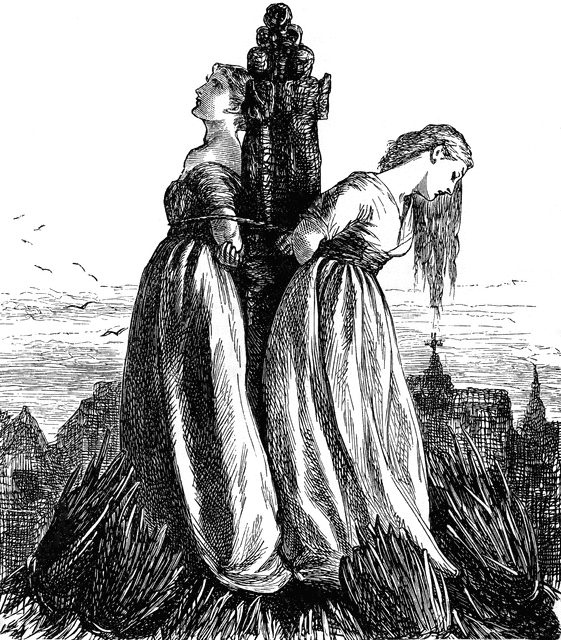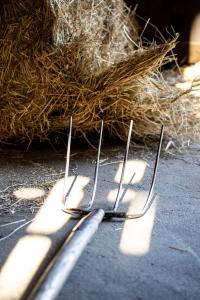HalLoWeEN! Absolutely my favorite holiday, hands down. This one is for my second year students. I decided to go with a theme of ghost stories for both my classes this year since we haven’t had those before (I was actually sick with COVID last year during Halloween so this class didn’t get to fully experience it with me last year). I wanted to use this fun opportunity to educate about the day and indulge in encorporating the holiday however I can, while still introducing new vocab and encouraging discussion. The ghost story I picked for my first year students is a bit more associated with the “lore” of Halloween, but for this class I wanted to go with a spooky Urban Legend, and Bloody Mary fit pretty well while sticking with the overall vibe and the author of this rendition of the tale did a great job of incorporating C1-C2 vocabulary in the story.
First date taught: 26 Oct 2022
Halloween
Theme: Urban Legends and Halloween. Discussing the lore and history behind the holiday.
Vocabulary for Audio:
cottage (n) [B1]: a small house, usually in the countryside
herbal (adj): Made from natural herbs specifically as opposed to from synthetic materials
remedy (n): a substance or method for curing an illness
herbal remedies: old form of medicine using only natural herbs to cure illness and ailment
witch (n): A woman who is learned in and actively practices witchcraft
crone (n): an ugly evil-looking or frightening old woman; a hag; often used to convey calling someone an old witch woman
food-stores (n): a place where food is kept (archaic) – lit. store of food, or amount of food stored away for later use
rot (v): to decay or decompose; to become bad
disappear (v): (of a person or thing) to go to a place or into a condition where the person or thing cannot be seen
grief-stricken (adj) [C2]: feeling extremely sad because of something that has happened, especially the death of somebody
barn (n) [C2]: a large building on a farm in which animals or hay (= dried grass) and grain are kept
haggard (adj): (of a person) having dark areas around the eyes and lines on the face, esp. from being tired or from suffering; looking exhausted and unwell, in poor condition; wild or untamed
suspicious (adj): feeling doubt or a lack of trust; arousing suspicion
enchanted (adj): affected by magic or seeming to be affected by magic
miller (n): a person, especially in the past, who owned or was in charge of a mill
nightshirt (n): a shirt-like garment (often oversized) that is worn to bed
restrain (v) [C1]: to control the actions or behaviour of someone by force, especially in order to stop them from doing something, or to limit the growth or force of something
cries (n): shouts or screams
assist (v): to help, to give assistance
frantic (adj): in a state of panic, worry, frenzy or rush
sharp-eyed (adj): attentive, given to noticing things, aware; having acute vision, having good eyesight
townsman (n): a male resident of a particular town or city (often used to contrast with a visitor or a person living in the country)
unearthly (adj): strange in a mysterious and sometimes frightening way
pitchfork (n): a tool with a long handle and two or three large points used for moving hay (= cut dried grass) or straw (= cut dried stems of crops). The pitchfork is occasionally employed as an improvised weapon, as in a mob or riot. It is commonly seen in reference to villagers forming a mob against some monster, and they are all wilding pitchforks and torches.
commotion (n): a sudden, short period of noise, confusion, or excited movement
far-sighted (adj): able to see things clearly that are far away but not clearly see things that are near you
The change in describing the person (either the same person, or a different person entirely), from being sharp-sighted to being far-sighted has an excellent metaphorical connotation. We can describe someone who has excellent vision when looking far away (as opposed to close up) as being far-sighted (as opposed to being near-sighted), but we can also describe as such:
far-sighted: having good judgment about what will be needed in the future and making wise decisions based on this
the opposite being: short-sighted
bullet (n): a projectile, usually of metal, shot from a gun at high speed
hip (n): the area below the waist and above the legs at either side of the body, or the joint that connects the leg to the upper part of the body
leapt (v) [C2]: to make a large jump or sudden movement, usually from one place to another
bonfire (n): a large fire that is made outside to burn unwanted things, or for pleasure
stake (n): in the past, a wooden post to which people were tied before being burned to death as a punishment (esp. those believed to be witches)

curse (n): a word or phrase that has a magic power to make something bad happen
villager (n) [C2]: a person who lives in a village
revenge (n) [B2]: harm done to someone as a punishment for harm that they have done to someone else
unmarked (adj): not bearing identification
chant (v): to repeat or sing a word or phrase continuously
summon (v) [C2]: to order someone to come to or be present at a particular place
vengeful (adj): expressing a strong wish to punish someone who has harmed you or your family or friends; vindictive or wanting vengeance
tear (v) [B1]: to pull or be pulled apart, or to pull pieces off
rip (v) [B2]: to pull apart; to tear or be torn violently and quickly
mutilated (v): to damage something severely, especially by violently removing a part
unfortunate (adj): marked or accompanied by or resulting in misfortune
torment (n): torture, originally as inflicted by an instrument of torture
trapped (v) [B2]: unable to move or escape from a place or situation
Vocabulary for Video:
graveyard (n): a place, often next to a church, where dead people are buried
jack-o’-lantern (n): a light made from a hollow pumpkin with holes cut into the sides like the eyes and mouth of a person’s face, inside which there is a candle
leer (v): To look sideways or obliquely; now especially with sexual desire or malicious intent.
tribe (n): a group of people, often of related families, who live in the same area and share the same language, culture, and history
malevolent (adj): having or displaying ill will; wishing harm on others; having an evil or harmful influence
Samhain: pronounced /ˈsaʊ.wɛn/ How to pronounce Samhain in Irish, English, Scottish Gaelic.
It is a Gaelic festival marking the end of the harvest season and beginning of winter or “darker half” of the year.
amongst (prep): in the middle of or surrounded by; sometimes used as an alternative to among. It is more formal and less common (more poetic, often used in literature)
lurk (v): to wait or move in a secret way so that you cannot be seen, especially because you are about to attack someone or do something wrong
druid (n): one of an order of priests which in ancient times existed among certain branches of the Celtic race, especially among the Gauls and Britons
foretell / foretold (v): to say what is going to happen in the future
disguised (adj): having an appearance that hides the true form
repel (v): to force away something unwanted
distract (v) [B2]: to make someone stop giving their attention to something
pagan (adj): belonging or relating to a religion that worships many gods, especially one that existed before the main world religions; belonging or relating to a modern religion that includes beliefs and activities that are not from any of the main religions of the world, for example the worship of nature
rituals (n) [C2]: a fixed set of actions and words, especially as part of a religious ceremony; A religious ritual is any repetitive and patterned behavior that is prescribed by or tied to a religious institution, belief, or custom, often with the intention of communicating with a deity or supernatural power. Rituals may be performed individually or collectively during predetermined times (e.g., praying at specific times of day), elicited by events (e.g., mourning rituals performed after a death), or performed sporadically (e.g., praying at various times throughout the day).
pagan rituals: rituals directly associated with the pagan religion
predictably (v): in a manner that can be expected or anticipated
heathen: (old-fashioned disapproving offensive) not adhering to an Abrahamic religion (Christianity, Judaism, Islam); uncultured; uncivilized; savage
potato famine: A famine is an extreme shortage of food in a region. The Great Irish Potato Famine was a period of mass starvation and disease in Ireland from 1845 to 1849, which constituted a historical social crisis which had a major impact on Irish society and history as a whole. This led to a mass migration of Irishmen to America during this time.
starving (adj) [B2]: dying because of not having enough food
folklore (n): the tales, legends and superstitions of a particular ethnic population
port (n): a place on the coast at which ships can shelter, or dock to load and unload cargo or passengers; a town or city containing such a place.
immersed (v): to become completely involved in something
shrank (v) [B2]: (past simple of shrink) to become smaller, or to make something smaller
gourds (n): a large fruit that has a hard shell and cannot be eaten, or the shell of this fruit used as a container (such as a pumpkin or zucchini)
demonic (adj): of, relating to, involving or resembling demons
sinister (adj): making you feel that something bad or evil might happen
Example: The young woman had a sinister motive for marrying the elderly millionaire.
unclear (adj) [B2]: not obvious or easy to see or know
stemmed from smth (ph.v) [C1]: to start or develop as the result of something
custom (n) [B1]: a way of behaving or a belief that has been established for a long time
foothold (n): a strong first position in a market, industry, etc. from which further progress can be made (give sth a foothold (in sth) or establish/gain/get a foothold (in sth))
(American) institution (n) [C2]: a custom or tradition that has existed for a long time and is accepted as an important part of a particular society
mass-produced (adj): produced cheaply and in large numbers using machines in a factory
commonplace (adj): ordinary; happening often or existing in large numbers, and so not considered special or unusual
retailer (n) [C2]: a person, shop, or business that sells goods to the public
transcend (v): to go further, rise above, or be more important or better than something, especially a limit
delighting (v) [B2]: to give someone great pleasure or satisfaction
gorge (v): (reflexive followed by on) To eat greedily and in large quantities
goulish (adj): ugly and unpleasant, or frightening; connected with death and unpleasant things (root word: ghoul, means an evil spirit that eats dead bodies, or someone who is very interested in death and unpleasant things)
gala (n): a special public occasion at which there is a lot of entertainment
scare (v): To frighten, terrify, especially in a minor way
frightfully (adj): used to emphasize what you are saying, especially how bad something is – however in this instance it has as a double meaning, utilizing the root word “fright”, which means the feeling of fear, or the action of being scared.
silver bullet (n): a simple solution to a complicated problem – however in this instance, this usage is also utilizing a double meaning, insomuch that a silver bullet is also a classic homage to the horror story of the werewolf, which can only be killed by shooting it with a silver bullet.
Listening Activity #1:
Audio recorded by me for the tale can be found here. Full vocab list here.
Listening Activity #2:
Transcript:
If graveyards make you nervous, and jack-o’-lanterns leer from every window. If the streets are full of monsters, just relax it’s all part of the fun. Trick, treat, or a little of each… let’s turn on all the lights and take a look at Halloween.
Ages ago when history was short and winters were dark tribes of Celtic farmers believed there was one day a year where the season of life meets the season of death, when malevolent spirits could rise from their graves and walk amongst the living. It was Celtic Ireland, BC and that day was called Samhain (/ˈsaʊ.wɛn/) – the celtic word for Summer’s End. On a day when so many spirits lurked, druid priests tried to foretell whether their villages would survive the winter, ordinary Celts lit great bonfires and disguised themselves to repel and confuse the spirits. In the eighth century, in a likely attempt to distract the Celts from their pagan practice, Pope Gregory the 3rd established All Hallows Day, a day honoring All Saints known and unknown, on November first. Europeans accepted the new holiday but saw no reason not to enjoy their traditional rituals as well, and soon Samhain became known as All Hallows Eve. From there it was a short walk to the name we all know today – Halloween. Predictably such a heathen tradition was of no interest to America’s first Puritans and so it, like Europe, was left behind. Until the mid 19th century when a potato famine drove over a million starving Irish and their folklore across the Atlantic and into America’s port cities. An ocean (away) from home and immersed in a cultural melting pot their traditions began to change. The roaring bonfires shrank to lanterns carved from gourds the first jack-o’-lanterns, and the Celts demonic disguises became the sinister costumes of modern day Halloween.
The origins of trick-or-treating remain unclear, it is believed to have stemmed from a custom known as souling, in which the poor went from home to home and prayed for the souls of each family’s dead in exchange for small cakes to eat (called Soul Cakes). By the early part of the 20th century Halloween was gaining a foothold as an American institution. Mass-produced Halloween costumes became commonplace, making Halloween one of the most profitable holidays on the calendar, earning retailers billions of dollars. Halloween’s appeal transcends age, delighting both children and yes, even adults alike. It’s a day to step into costume, gorge on sweets throw ghoulish galas and scare ourselves silly. The truth is frightfully clear, not even a silver bullet could stop Halloween now.
HISTORY®, all rights reserved.
Attribution: Image by Freepik

